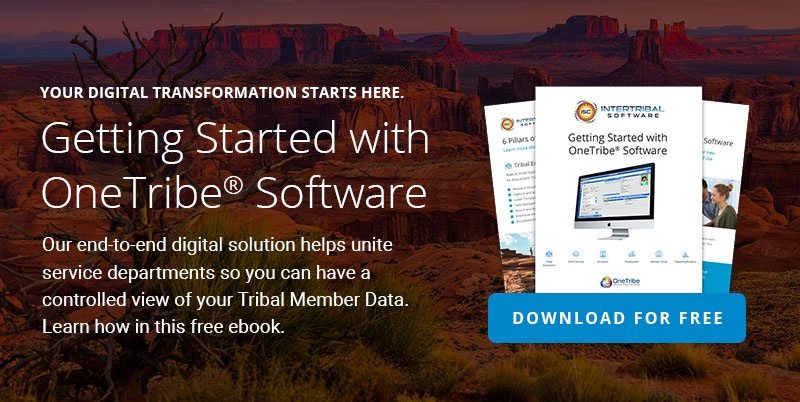
At least one person falls victim to cyber criminals every 39 seconds. The attacks tend to affect individuals whose sensitive information leaks to fraudsters. With the high cybercrime rates, it is natural to worry about the security of your Tribal Government’s data in the cloud, especially as more essential applications and platforms move from on-premise to cloud environments.
Read on to learn more about the cloud and how to ensure your Tribal Government’s data is protected within it.
What is the Cloud?
The cloud is a type of server network that stores data on the internet. It is an advanced solution compared to traditional databases like local servers, external hard drives, and sometimes, paper-based records.
Unlike the mentioned traditional databases, the cloud can hold unlimited data, scaling storage up and down in real time. Moreover, authorized persons can securely access the stored data from any location using a computer or internet-enabled device.
It’s important to note that there are multiple “kinds” of clouds — from large, well-known public clouds like Microsoft Azure, to private clouds created and maintained by a single organization. For most purposes, public clouds offer the best combination of scalability, security, and cost-effectiveness, making them a much more popular solution. For the purposes of this article, we will be describing the security of public clouds going forward.
How Secure is Cloud Data?
How secure is cloud data? The cloud does not just store vast amounts of data. It also has hard-to-bypass security measures that track and prevent security threats around the clock. With the around-the-clock security measures, Tribal Government data remains safe from unauthorized access.
Why is the Cloud a Safe Solution for Tribal Government Data?
The cloud has built-in firewalls which analyze incoming data to identify and block suspicious activities. Apart from the built-in firewalls, cloud servers use the following security measures to keep Tribal Government data safe:
1. Data Encryption
The cloud uses encryption to convert Tribal Government data into a coded format while in transit and storage. With data encryption, unauthorized third parties cannot read it even if they have access to it.
2. Multi-factor Authentication
The cloud uses multi-factor authentication to add an extra layer of protection to data. This security measure prompts users to provide two or more verification factors to access stored data.
For instance, the cloud prompts the user to provide a password and a code sent via SMS before accessing data. This multi-factor authentication makes accessing the cloud more difficult for unauthorized parties.
3. Third-party Security Testing
From time to time, cloud service providers hire third-party security firms to evaluate servers. During the routine evaluations, the third-party security firms use real-world attacks to check whether existing security measures are robust. Afterward, experts fortify patch weaknesses to prevent anticipated attacks.
4. Automatic Cloud Security Monitoring
How secure is cloud data? The cloud uses automated security algorithms to monitor servers all around the clock. The intelligent algorithms help identify and thwart unusual access patterns like multiple login attempts.
5. Identity and Access Management
The cloud also employs identity and access management to reinforce data security. The identity and access management system authenticates users before access. This security technology can use passwords, biometrics, and geolocation to give or deny access.
Secure Your Tribal Government Data With OneTribe Software
Since 1993, Intertribal software has helped dozens of Tribal Governments improve their member services with OneTribeⓇ, our end-to-end member services management platform. As a cloud-based solution, OneTribe keeps your member data safe from outside threats while ensuring easy access to member information and documents across multiple departments.
Beyond data management, OneTribe also assists your Tribal Government with reporting, automation, and much more. To learn more, download our free guide Getting Started with OneTribe, or request a demo of the platform today.
Sign Up For Our Newsletter
Recent Posts
- Innovations in Housing: Revolutionizing Tribal Housing with Digital Tools for Management
- Empowering Tribal ICW Departments: Achieve ICWA Compliance and Certification Success with OneTribe® Software
- OneTribe CCA - Your Child Care Data Tracker Replacement Solution
- Transform Your Tribal Member Services With Integrated Software Solutions
- Intertribal Software Raises Strategic Investment
Categories
- OneTribe Software
- digital transformation
- tribal government software
- Laserfiche ECM
- Intertribal Software Consultants
- Childcare Assistance
- Housing Management
- Intertribal Software
- tribal member management
- AFCARS Data Collection
- Child Care Data Tracker
- Child Welfare
- Housing
- ICWA
- ICWA Compliance
- Indian Child Welfare Act
- OneTribe Platform
- Title IV-E Certification
- Tribal Data Tracker
- Tribal Family Services
- Tribal Housing
- Tribal ICWA Software
















